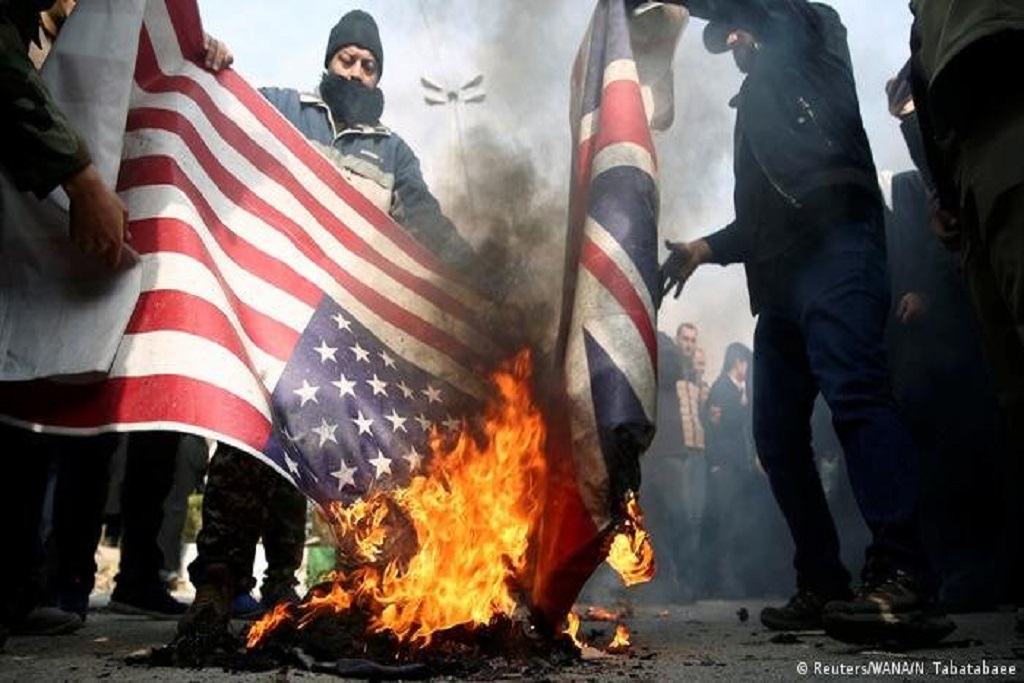January 3, 2022, marks the second anniversary of the assassination of General Soleimani by a U.S. drone attack on the perimeter of Baghdad international airport.
Faraan: Immediately after the incident, Iranian officials published statements calling for global condemnation of the United States military aggression. They also promised reciprocal actions. Five days later, Iran launched 13 missiles into the occupied Ain-al-Assad base, showcasing Iranian Missile capabilities and developments. They also claimed that the true vengeance for the assassination of Gen. Soleimani would be the end of the U.S. military presence in the region. Two years later, it seems that the Iranians have kept their word and are closer than ever to their goal.
Afghanistan
In 2001, the then-United States president, George W. Bush, launched an all-out offensive on Afghanistan with a coalition of allied nations to hunt down the world-famous terrorist Osama Bin Laden and his group, Al-Qaida, responsible for the 9/11 terrorist attacks. Another goal of the invasion was to overthrow the Taliban regime, accused of sheltering Al-Qaida, promising to establish a strong democratic government in Afghanistan. The former goal was eventually achieved in 2013, with an operation near Pakistan. But after 20 years of military presence and huge expenditures provided by American taxpayers, the U.S.-backed government of Afghanistan fell in just a few days, following the departure of American troops in the August of 2021. The Taliban took the control of Afghanistan, and now there are no American soldiers to cause them any trouble. The final result of this unjustified military adventure was 241000 deaths, followed by more serious concerns for the future of Afghanistan.
Iraq
As a result of a much-debated accusation of possessing weapons of mass destruction by the former Iraqi dictator, Saddam Hussain, the republican administration of George W. Bush launched a massive operation on Iraq in March 2003. This was the most significant unilateral action of the U.S. in the post-soviet era, undermining the U.N. security council by not delaying operations until its permission for military intervention in Iraq. The United States deployed over 170000 troops to Iraq. After a short period of absence in the country, the United States redeployed ground forces again, claiming to cooperate with Iraqi forces in the battle against the newly established terrorist group, ISIL. Even though the U.S. managed to overthrow the Iraqi dictator in a matter of months, no weapons of mass destruction were discovered in the country, questioning the fundamental reason behind the invasion of Iraq. As for the ISIL military quest, there have been many pieces of evidence that the U.S. presence in the country generally led to the favor of the terrorist group by intervening in Iranian-Iraqi cooperative efforts to fight back against ISIL.
Following the drone operation targeting Major General Soleimani on Iraq soil on January 5, 2020, the Iraqi council of representatives determined the action as an explicit violation of the country’s sovereignty. They called for the immediate dismissal of the U.S. military personnel from Iraq. The Trump administration complained against the vote. He threatened to impose sanctions on the country to cause reluctance on the Iraqi government to take any serious actions. Following the continuance of pressures and resistance from the Iraqi resistance movements, the gradual transfer of the U.S. military bases in Iraq to the Iraqi military gained pace. By September 29, 2021, the number of troops decreased to 3500. Finally, following a strategic dialogue between the Iraqi prime minister Al-Kadhemi and the U.S. president Joe Biden, all combat operations came to halt on December 9, 2021. Currently, only 2500 personnel remain in Iraq for an advisory role, as stated by the U.S. officials.
Leaving Iraq has caused concerns amongst the U.S. military elites, most notably McKenzie calling the procedure a major political success for Iran. Seemingly, the post-Soleimani Middle East (West Asia) is a much more dangerous place for Americans, and Iran is much closer to its goal of forcing the Americans out of the region.
By Mohsen Hayat










